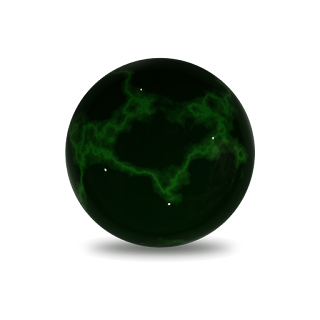In the heart of winter, when the world is blanketed in snow and the air crackles with cold, there exists a gemstone that captures the essence of a blizzard’s mystique-the Blizzard Stone. With its swirling patterns of icy whites, serene blues, and stormy grays, this gem evokes the quiet power of a snowstorm frozen in time. Whether admired for its ethereal beauty or revered for its supposed metaphysical properties, Blizzard Stone has carved a niche in the gemstone world, appealing to collectors, jewelers, and spiritual enthusiasts alike.
Physical Properties: The Anatomy of a Frost Gem
Blizzard Stone is a visual symphony of nature’s artistry. Its base color ranges from milky white to pale blue, often interlaced with gray veins or speckles resembling snowflakes trapped mid-fall. The stone’s opacity varies; some specimens are nearly translucent, like ice, while others are densely opaque, echoing the heart of a winter storm.
- Hardness: Ranking 6-7 on the Mohs scale, Blizzard Stone is durable enough for jewelry but requires care to avoid scratches.
- Luster: Exhibiting a vitreous to silky sheen, its surface can appear softly polished or subtly rugged, much like a frozen lake.
- Texture: Smooth yet complex, the stone often features dendritic inclusions or quartz-like formations, creating a "snowburst" effect.
These traits make each Blizzard Stone unique, a one-of-a-kind masterpiece shaped over millennia.
History and Origin: From Ancient Glaciers to Modern Showcases
Blizzard Stone’s origins are as enigmatic as the storms it mirrors. First discovered in the early 20th century by Arctic explorers, it was initially mistaken for common quartz. However, its distinctive patterns soon caught the eye of geologists. Indigenous communities in northern Scandinavia and Canada have legends of a “spirit stone” used in rituals to appease winter deities, believed to be Blizzard Stone.
Today, primary mines are located in Norway, Canada, and Russia, where miners brave subzero temperatures to extract it from bedrock. The gem gained commercial traction in the 1980s, appealing to designers seeking unconventional materials. Its name, coined by a Finnish jeweler, reflects its chaotic yet harmonious appearance.
Metaphysical Properties: The Stone of Clarity and Calm
In metaphysical circles, Blizzard Stone is hailed as a talisman of mental clarity and emotional resilience. Practitioners claim it embodies the stillness after a storm, helping to:
- Quiet the Mind: Its cool energy is said to dissolve stress, making it ideal for meditation.
- Enhance Focus: By “freezing” mental clutter, it aids in decision-making and creativity.
- Balance Emotions: Linked to the crown and third eye chakras, it’s believed to foster introspection and spiritual alignment.
While scientific evidence is absent, many users report a palpable sense of calm when holding the stone, attributing to it a near-magical ability to soothe modern anxieties.
Blizzard Stone in Jewelry: Winter’s Elegance Adorned
Jewelers prize Blizzard Stone for its versatility. Its neutral tones pair effortlessly with silver, white gold, or platinum, enhancing its wintry vibe. Common designs include:
- Cabochon Cuts: Highlighting its opaque beauty, often set in pendants or rings.
- Statement Pieces: Bold earrings or brooches that showcase intricate patterns.
- Minimalist Styles: Delicate beads in bracelets or necklaces for understated elegance.
Designer Elena Marquez notes, “Blizzard Stone speaks to those who find beauty in contrasts-its chaos and tranquility mirror life itself.” Though durable, it’s best used in pieces less prone to impact, like pendants or earrings.
Care and Maintenance: Preserving the Frost
To maintain its allure, Blizzard Stone requires mindful care:
- Cleaning: Use a soft cloth and mild soap; avoid ultrasonic cleaners.
- Storage: Keep separate from harder gems to prevent scratches.
- Avoid Extremes: Protect from prolonged sun exposure or harsh chemicals.
Regular upkeep ensures its frosty brilliance endures for generations.
Market Value: A Gem Within Reach
Blizzard Stone’s value hinges on color intensity and pattern rarity. Pale stones with subtle veining are affordable (20-50 per carat), while vivid blues with dendritic designs can fetch $200+ per carat. It remains more accessible than diamonds or sapphires, making it a favorite for bespoke jewelry without the luxury price tag.
Blizzard Stone in Modern Culture: Beyond Adornment
Beyond jewelry, this gem has inspired art and literature. Poets liken its patterns to “frozen whispers,” while interior designers use raw specimens as décor accents. In film, it’s featured as a mystical artifact in fantasy genres, symbolizing hidden truths or portals to other realms.
How to Choose Your Blizzard Stone
When selecting a stone, consider:
- Color Preference: Do you lean toward stark whites or moody grays?
- Pattern Uniqueness: Look for distinctive inclusions that tell a story.
- Setting Intentions: If using spiritually, choose a stone that “feels right.”
Visit reputable jewelers and request certification to avoid imitations, often glass or resin with printed patterns.
Conclusion: Embrace the Storm
Blizzard Stone is more than a gem-it’s a narrative of nature’s duality, offering beauty born of tempest and tranquility. Whether worn as jewelry, used in meditation, or simply admired, it invites us to find peace amid life’s chaos. As winter’s ambassador, it reminds us that even in the fiercest storms, there is elegance to be found.















0 Comments